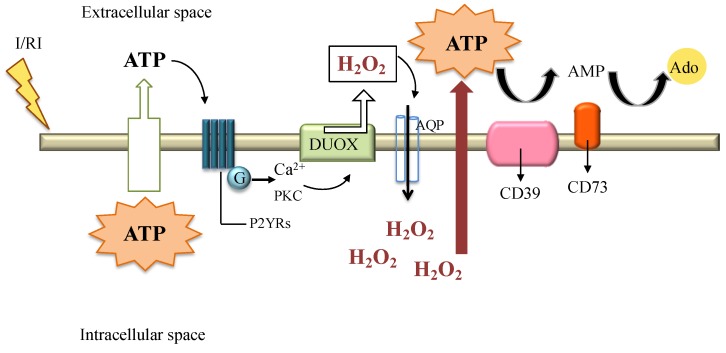Figure 4.
Ischemia reperfusion injury (I/RI) induces the passive or active release of intracellular ATP to the extracellular space. Once in the extracellular milieu, ATP can activate G-protein-coupled receptors (P2YRs) to stimulate calcium-dependent signaling and the activation of protein kinase C (PKC) allowing the activation of the DUOX complex and the release of H2O2. H2O2 can cross the cellular membrane via AQP to initiate redox signaling and further promote ATP efflux. Extracellular ATP is metabolized by enzymatic phosphohydrolysis in a two-step process via CD39 conversion of ATP to AMP, and CD73 phosphohydrolysis of AMP to adenosine (Ado). The latter, can mediate anti-inflammatory effects [50,79,84,85].

